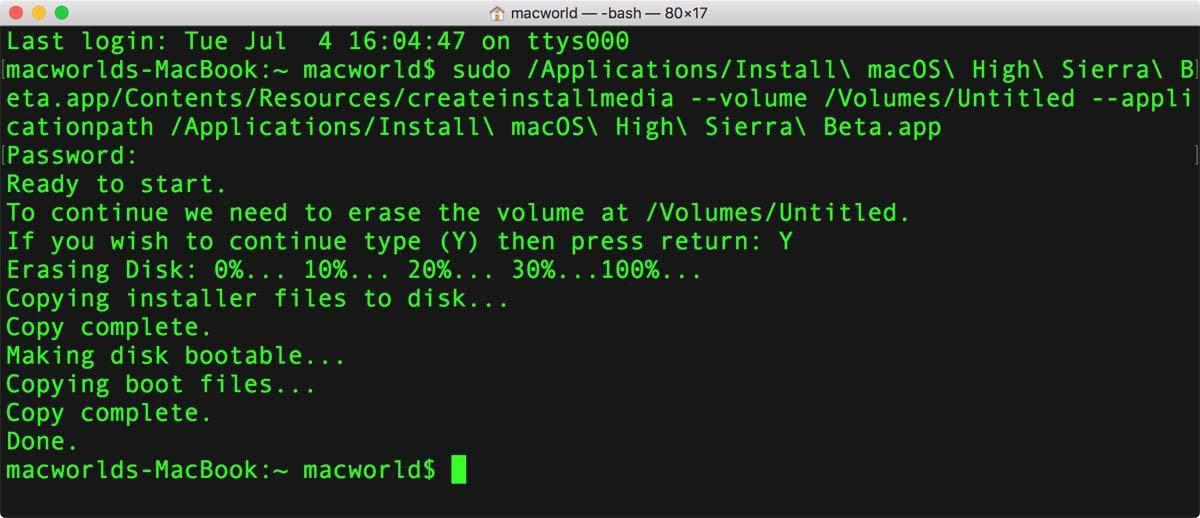| Developer(s) | Apple Inc. |
|---|---|
| Operating system | macOS |
| Platform | ARM64, x86-64, IA-32, PowerPC |
| Type | Terminal emulator |
| Website | www.apple.com/macosx/features/unix/ |
Termius is more than a mere SSH client – it’s a complete command-line solution that’s redefining remote access for sysadmins and network engineers. Securely access Linux or IoT devices and quickly fix issues from the comfort of your couch via laptop or phone. Termius Free Features: Termius is available for all major mobile and desktop systems. Enjoy a beautiful, hand-crafted interface. Securely Sync Data Across All Your Devices. Termius lets you organize hosts into groups. Groups allow you to share settings, though each host can have its own separate preferences. This data, along with connection and command history, is securely synced across all your devices. Termius uses end-to-end encryption to ensure your data remains safe and secure. The mkdir command is a shortcut for “make directory”. Here’s a short video showing me creating a folder via my Mac Terminal, entering it, and then creating another folder inside it. This article explains how you can open Terminal on your Mac.This article further explains how you can quit Terminal and a shell process. The Terminal app lets you type and execute text-based commands to control your Mac. Download the latest version of Terminus for Mac - Highly configurable terminal emulator. Read 1 user reviews of Terminus on MacUpdate.
Terminal (Terminal.app) is the terminal emulator included in the macOSoperating system by Apple.[1] Terminal originated in NeXTSTEP and OPENSTEP, the predecessor operating systems of macOS.[2]
As a terminal emulator, the application provides text-based access to the operating system, in contrast to the mostly graphical nature of the user experience of macOS, by providing a command-line interface to the operating system when used in conjunction with a Unix shell, such as zsh (the default shell in macOS Catalina[3]).[4] The user can choose other shells available with macOS, such as the KornShell, tcsh, and bash.[4][5]
The preferences dialog for Terminal.app in OS X 10.8 (Mountain Lion) and later offers choices for values of the TERM environment variable. Available options are ansi, dtterm, nsterm, rxvt, vt52, vt100, vt102, xterm, xterm-16color and xterm-256color, which differ from the OS X 10.5 (Leopard) choices by dropping the xterm-color and adding xterm-16color and xterm-256color. These settings do not alter the operation of Terminal, and the xterm settings do not match the behavior of xterm.[6]
Terminal includes several features that specifically access macOS APIs and features. These include the ability to use the standard macOS Help search function to find manual pages and integration with Spotlight.[citation needed] Terminal was used by Apple as a showcase for macOS graphics APIs in early advertising of Mac OS X,[citation needed] offering a range of custom font and coloring options, including transparent backgrounds.
See also[edit]
- iTerm2, GPL-licensed terminal emulator for macOS
- Terminator, open-source terminal emulator programmed in Java
References[edit]
- ^'What Is Mac OS X - All Applications and Utilities - Terminal'. Apple Inc. Archived from the original on May 10, 2013.
- ^Wünschiers, Röbbe (January 1, 2004). Computational Biology: Unix/Linux, data processing and programming : with 19 figures and 12 tables. Springer Science & Business Media. ISBN9783540211426.
- ^'Use zsh as the default shell on your Mac'. Apple Support. Retrieved January 18, 2020.
- ^ abMcElhearn, Kirk (December 26, 2006). The Mac OS X Command Line: Unix Under the Hood. John Wiley & Sons. ISBN9780470113851.
- ^Kissell, Joe (January 1, 2009). Take Control of the Mac Command Line with Terminal. TidBITS Publishing, Inc. ISBN9781933671550.
- ^'nsterm - AppKit Terminal.app', terminfo.src, retrieved June 7, 2013
Terminus Terminal App
| Wikimedia Commons has media related to Terminal (macOS). |
Terminus Mac Download

Have you ever wanted a quick way to compare two directories (folders), in order to see which files may differ between the two? Back in 2006, we discussed FileMerge (part of Apple’s Xcode developer tools), which can do just that. There are other third-party GUI tools as well, but there’s actually a free folder comparison tool built into every Mac—it just requires a quick trip to Terminal to put it to use. The program is called diff, and it’s quite simple to use.
Launch Terminal (in Applications -> Utilities), and then use the cd command to change to the directory containing the folders you’d like to compare. (The folders can be located anywhere, of course, but it’s easiest if they’re in the same folder.). Once there, just run this command:
This is a pretty simple command, with two command-line switches (-rq). The r tells diff to look at each directory recursively, including subdirectories. The q switch sets diff brief mode. If we didn’t set brief mode, diff would not only tell you which files are different between the two folders, but also show the actual line-by-line differences for any text files that exist in both locations but are not identical. Given that we’re just interested in comparing the folders’ contents, we don’t need that level of detail, so we’ll use brief mode to suppress it. And that’s all there is to it. Here’s how it looks in action:
Terminus Mc Youtube
Obviously, this is a simplistic example, but it works just as well on a large folder with hundreds of files. If you want to do more with diff, of course, it’s capable of much more than just simple folder comparisons; type man diff to read about its full capabilities.
